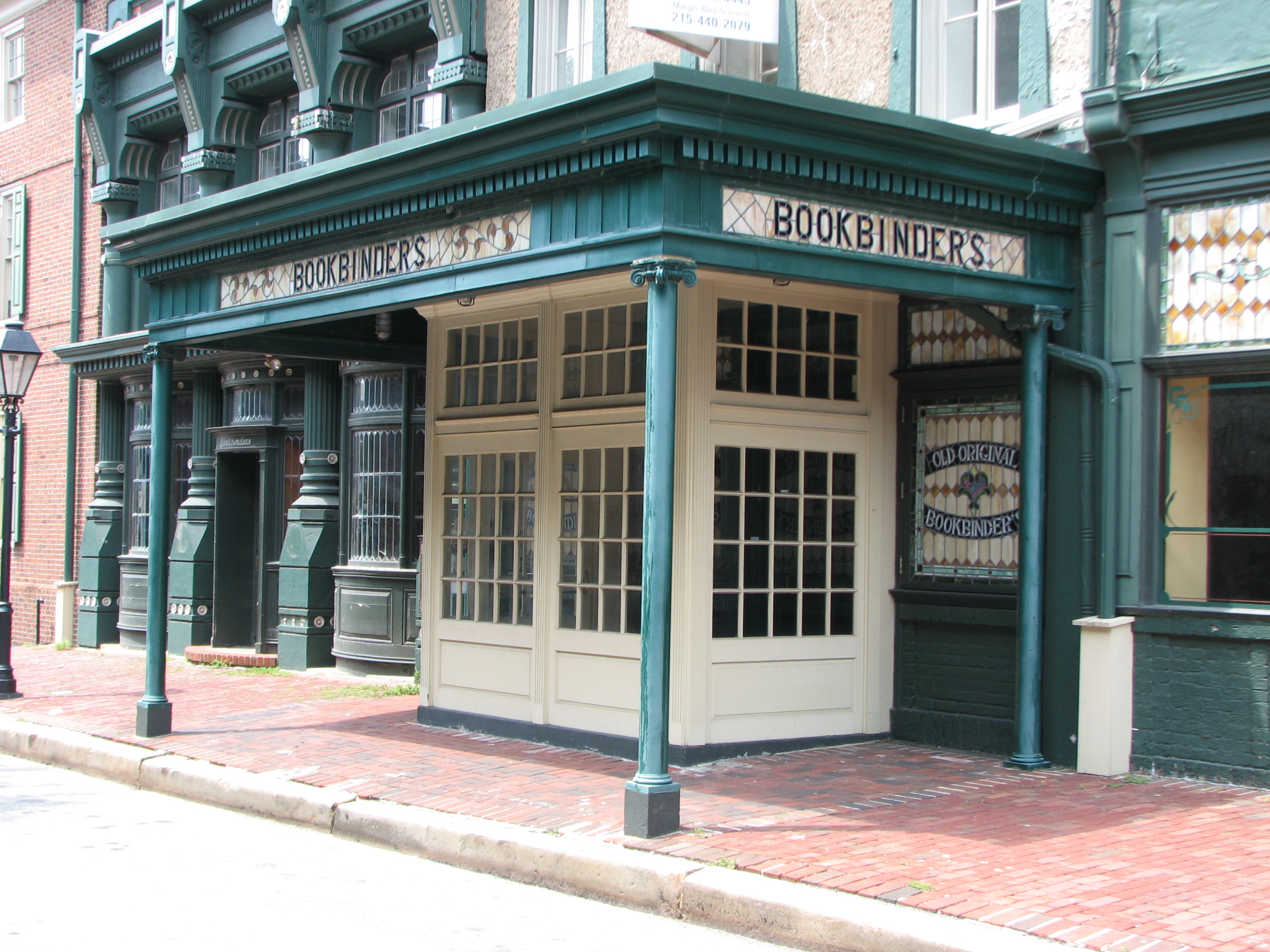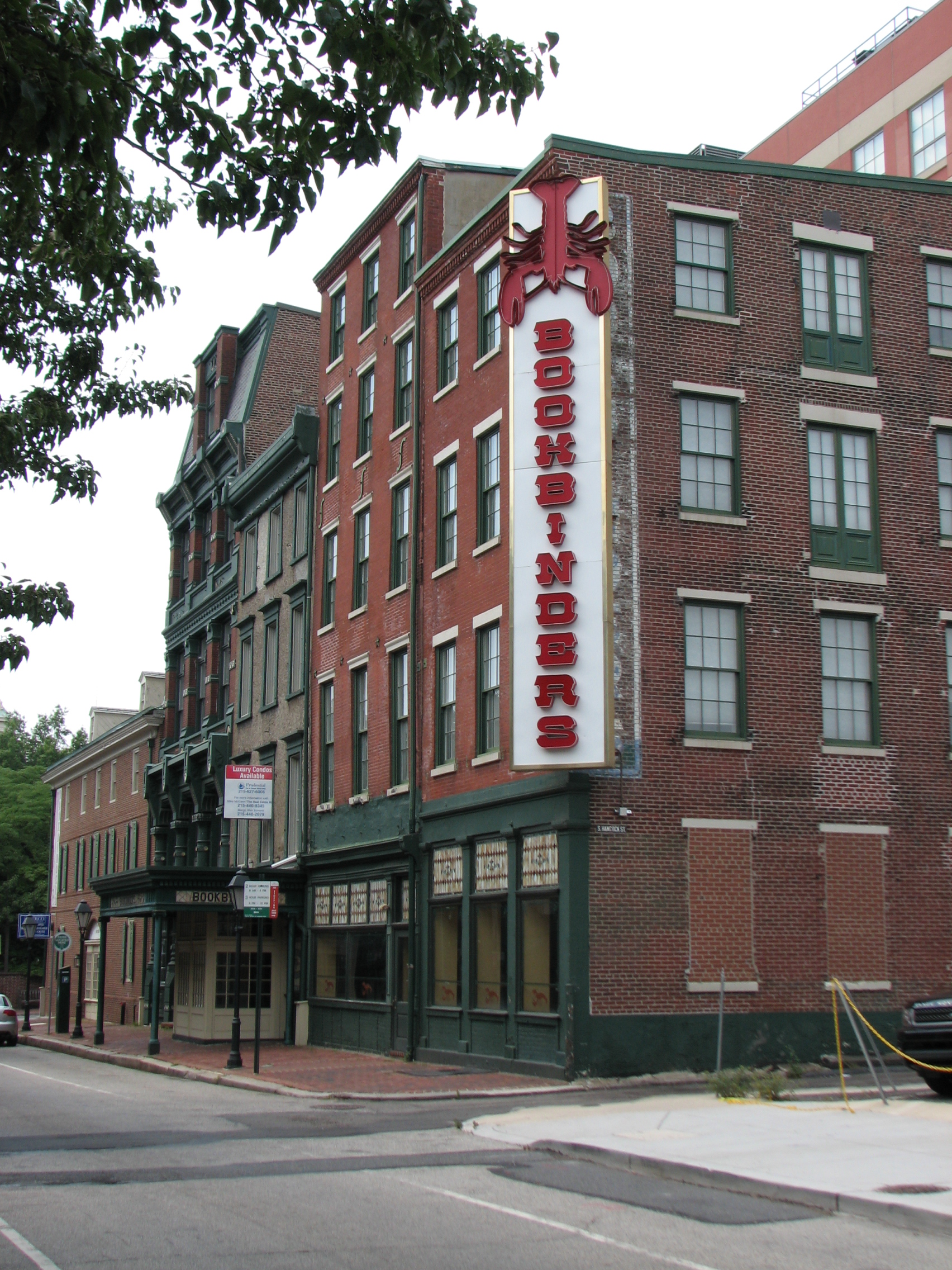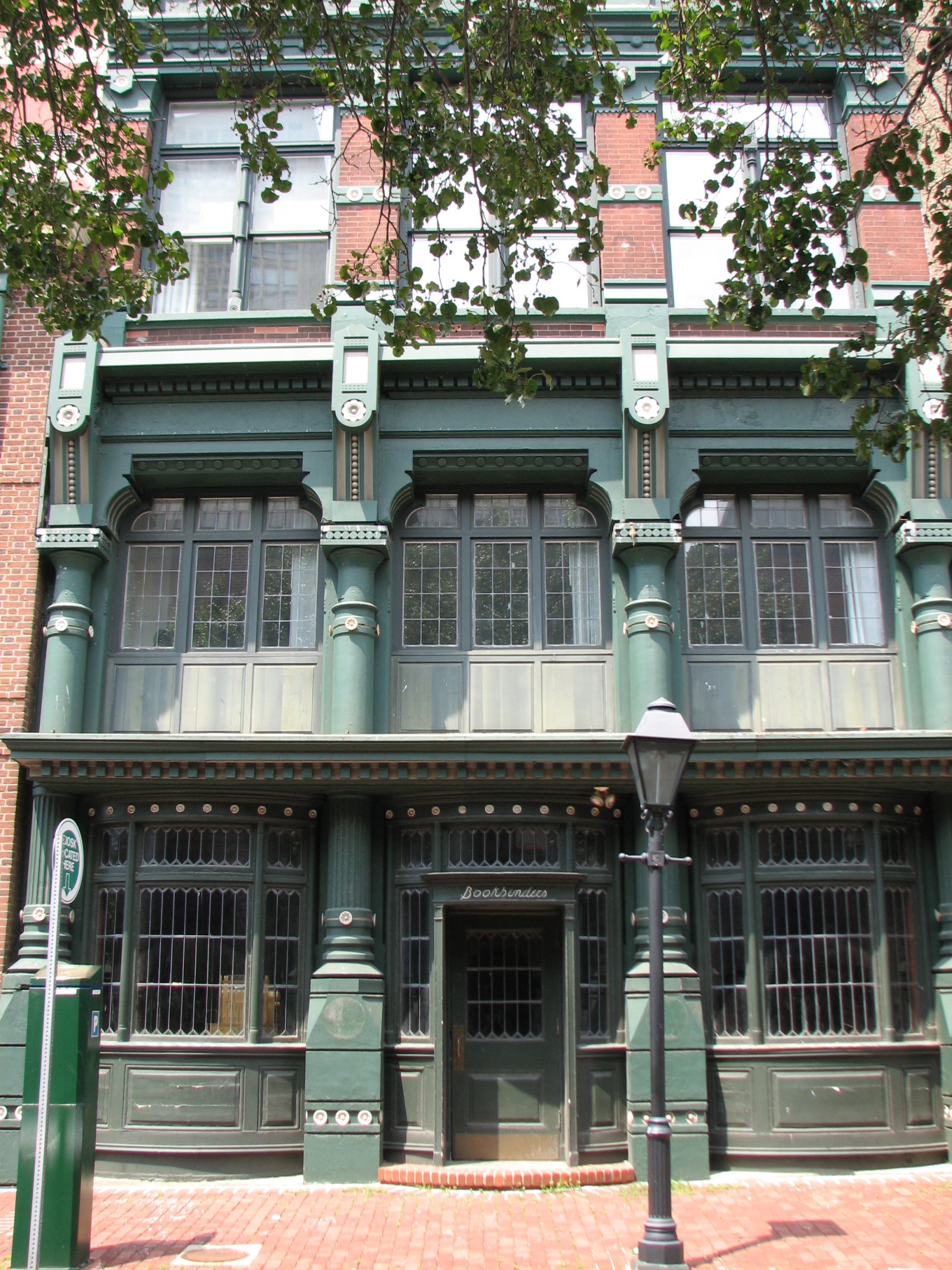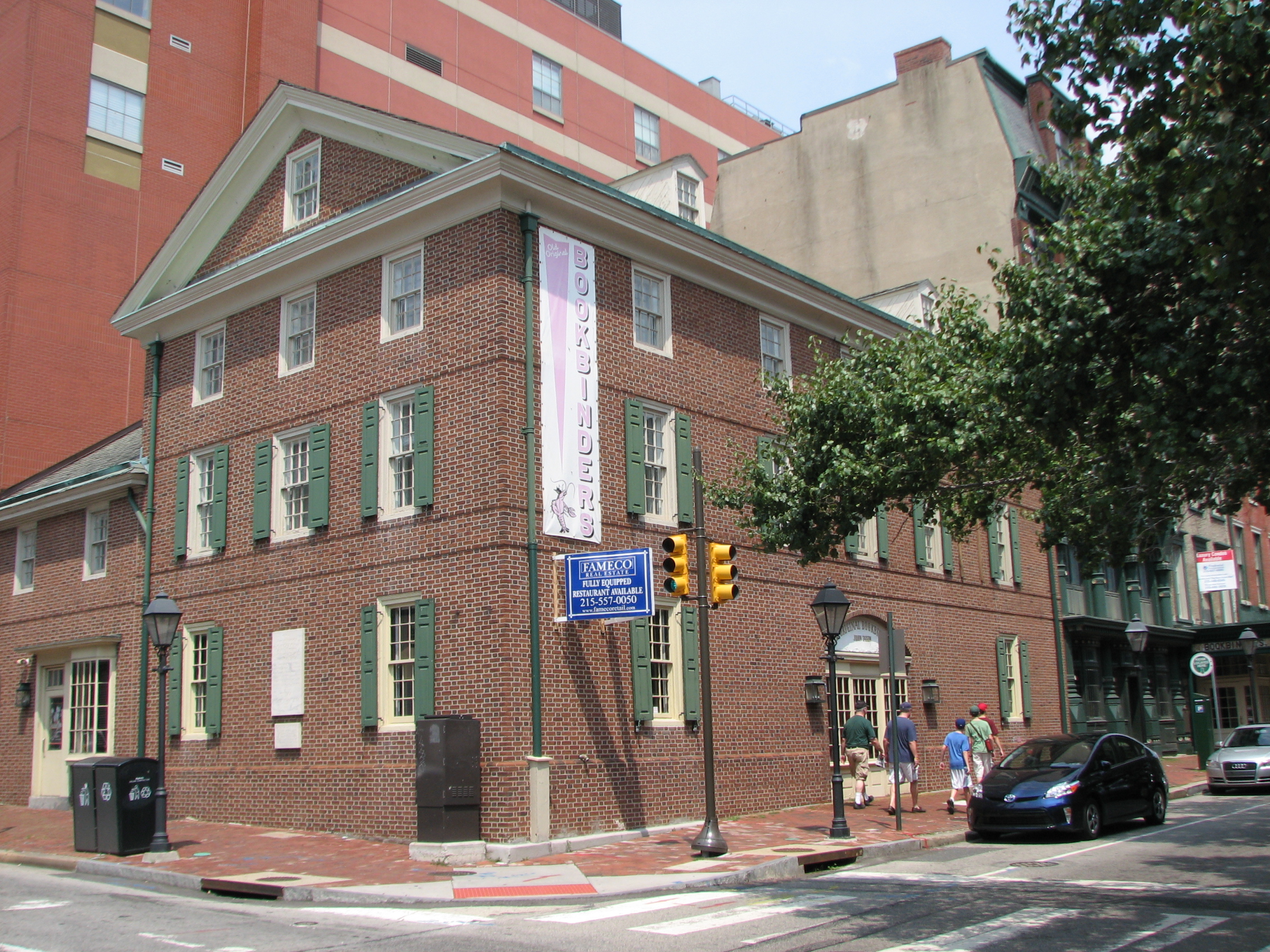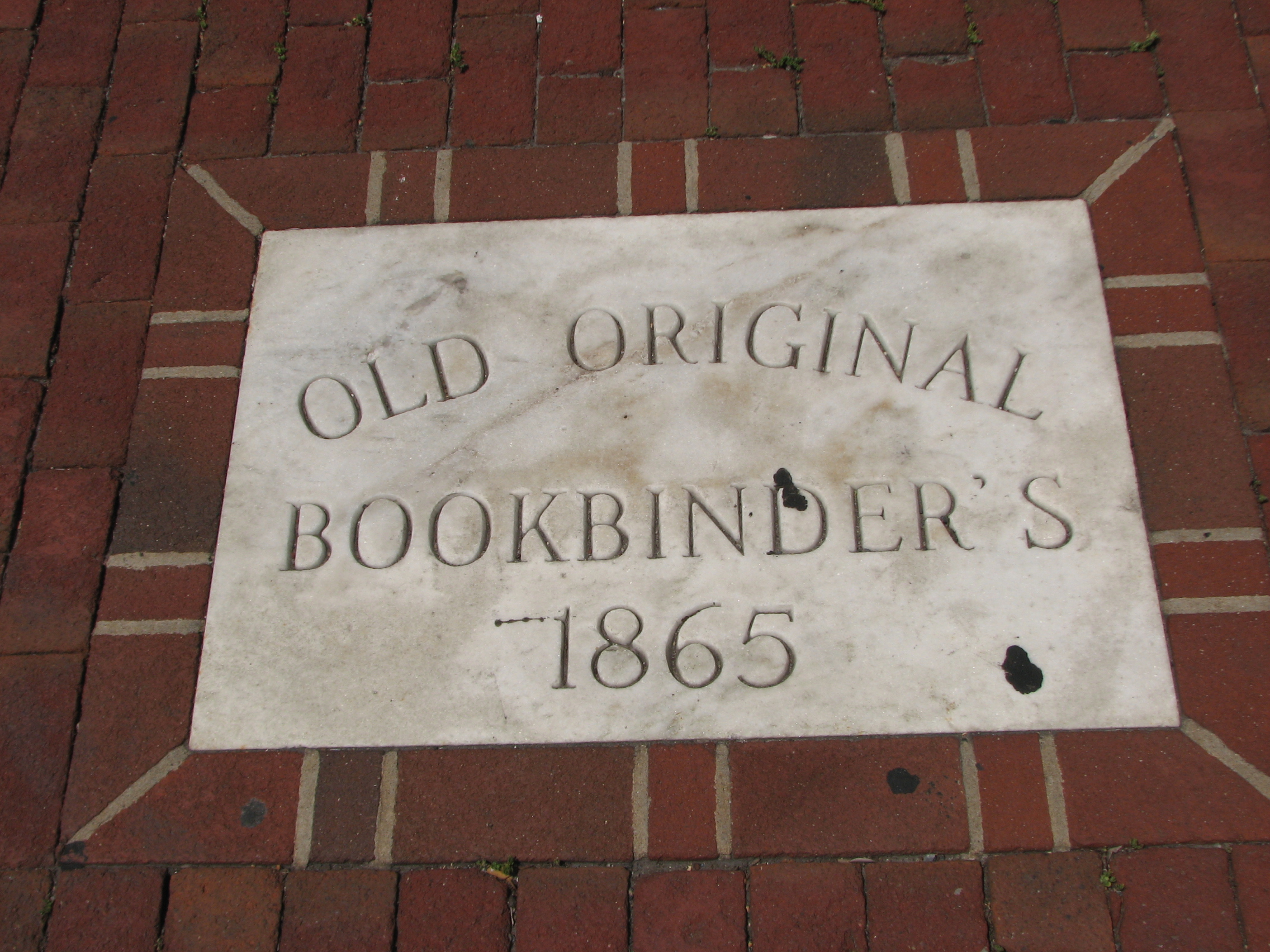Look Up! Bookbinder’s is a timeline of Old City architecture
“Look Up!” is a PlanPhilly feature that encourages appreciation of our architectural and historical environment. The photo essays focus on different Philadelphia areas and their distinctive building styles and details, all of which make up the physical fabric of the city and region.
The site of Old Original Bookbinder’s, that great Philadelphia institution for over a century, is a time capsule of Old City history and architectural styles.
The first pre-Bookbinder’s diners on the 100 block of Walnut Street were inhabitants of a Native American reservation, according to the restaurant’s old promotional brochure, and one of the first businesses on the block was a bank established in 1780. Deed searches for the five buildings from 121 to 135 Walnut Street that comprise the modern Bookbinder’s complex begin in the 17th and 18th centuries.
The buildings at 121 to 123 Walnut are examples of the Greek Revival style used throughout Old City. The building at 121 Walnut dates to 1836 and was owned by Thomas Sparks, who sold it to Emmanuel Bookbinder in 1920. The next address was built between 1840 and 1848 by merchant John Thompson, who sold it to Emmanuel Bookbinder in 1915.
Ownership of the land at 125 Walnut can be traced back to 1699. The building that still stands, an example of Egyptian Revival style, was designed as a store for Isaac Morris. It was purchased in 1906 by Emmanuel, whose father Samuel started the family restaurant business in 1865, according to a sidewalk plaque.
The building at 127 Walnut has the most striking façade, a bold Victorian design constructed mainly in cast iron in 1875. Before that, it was a brick mansion owned by one of Philadelphia’s great families, the Biddles. Bookbinder’s bought it in 1947.
The parcel at the corner of 2nd and Walnut was the John Drinker House in 1751. It was John Krider’s gun shop and manufacturing plant in the mid-1800s. By the 1950s, the building was deteriorating, and its new owner, Bookbinder’s, razed the structure and rebuilt it in the Colonial Revival style, a modern reconstruction of an 18th century tavern that had also occupied the site. At the groundbreaking in 1960, owner John Taxin was joined by Mayor Richardson Dilworth, a champion of Society Hill’s revival as a historic district.
The guest book at Bookbinder’s through the 20th century reads like a who’s who of political, financial and Hollywood titans: Presidents Teddy Roosevelt, Taft, McKinley and Wilson; Cornelius Vanderbilt and J.P. Morgan; Lionel and John Barrymore, Eddie Fisher and Liz Taylor. News photos show Taxin visiting the table of Richard and Pat Nixon; a horrified Alfred Hitchcock watches a lobster being plucked from the enormous fish tank.
In 1971, the buildings at 121 to 127 Walnut were listed on the Philadelphia Register of Historic Places. The reconstruction at 129-135 was added to the list in 1975.
But the 21st century wasn’t as kind to Bookbinder’s. In 2001, the restaurant announced plans for a major renovation. Following a three-year, $4.5 million transformation, the buildings reopened as a luxury apartment and condo complex, The Moravian, with a downsized restaurant. Bookbinder’s owner filed for bankruptcy protection in 2006, and the Old City landmark closed its doors in 2009.
“Look Up” Spirit of ’76 on Chestnut
“Look Up” Eyre design in Chestnut Hill
“Look Up” Beaux Arts beauty at Penn
“Look Up” Moderne and Machine Age Schools
“Look Up” Frank Miles Day mansions
“Look Up” Thomas Ustick Walter’s columns
“Look Up” Ronald McDonald House
“Look Up” Abington’s flirtation with Hollywood
“Look Up” Rittenhouse Square’s stables
“Look Up” Fairmount’s contribution to the row home dynamic
“Look Up” Drexel’s Poth Dynasty
“Look Up” Wright’s Ardmore Experiment
“Look Up” Contemporary neighbors in Society Hill
“Look Up” Imaginative Eyre on Locust Street
“Look Up!” Elfreth’s Alley has issues
“Look Up” Architectural exercises on Boathouse Row
“Look Up!” John Notman’s brownstone temples
“Look Up!” 19th Century luxe on Locust St.
“Look Up!: 20th Century evolution in East Falls
“Look Up!” Rural retreats in Northeast Philly
“Look Up!” Modernist lines on Haverford Ave.
“Look Up!” Chestnut Hill’s modernist gems
“Look Up!” The Art Deco Palace of Mt. Airy
“Look Up! An architect’s legacy on Spruce Street
“Look Up!” The French Village in Mt. Airy
“Look Up” and check out the nouveau mansions of North Broad
“Look Up” and check out elegant Southwark
“Look Up” and check out Henry Disston’s company town
“Look Up: and check out Spruce Hill
“Look Up” and check out Green Street
“Look Up” and check out West Laurel Hill
“Look Up” and check out Parkside
“Look Up” and check out Awbury Arboretum
“Look Up” and check out Nicetown
“Look Up” and check out Overbrook Farms
“Look Up” and check out Girard Estate
“Look Up” and check out Rittenhouse/Fitler Square
“Look Up” Furness Chapel
Contact the writer at ajaffe@planphilly.com.
“Look Up!” The Art Deco Palace of Mt. Airy
“Look Up! An architect’s legacy on Spruce Street
“Look Up!” The French Village in Mt. Airy
“Look Up” and check out the nouveau mansions of North Broad
“Look Up” and check out elegant Southwark
“Look Up” and check out Henry Disston’s company town
“Look Up: and check out Spruce Hill
“Look Up” and check out Green Street
“Look Up” and check out West Laurel Hill
“Look Up” and check out Parkside
“Look Up” and check out Awbury Arboretum
“Look Up” and check out Nicetown
“Look Up” and check out Overbrook Farms
“Look Up” and check out Girard Estate
“Look Up” and check out Rittenhouse/Fitler Square
WHYY is your source for fact-based, in-depth journalism and information. As a nonprofit organization, we rely on financial support from readers like you. Please give today.



